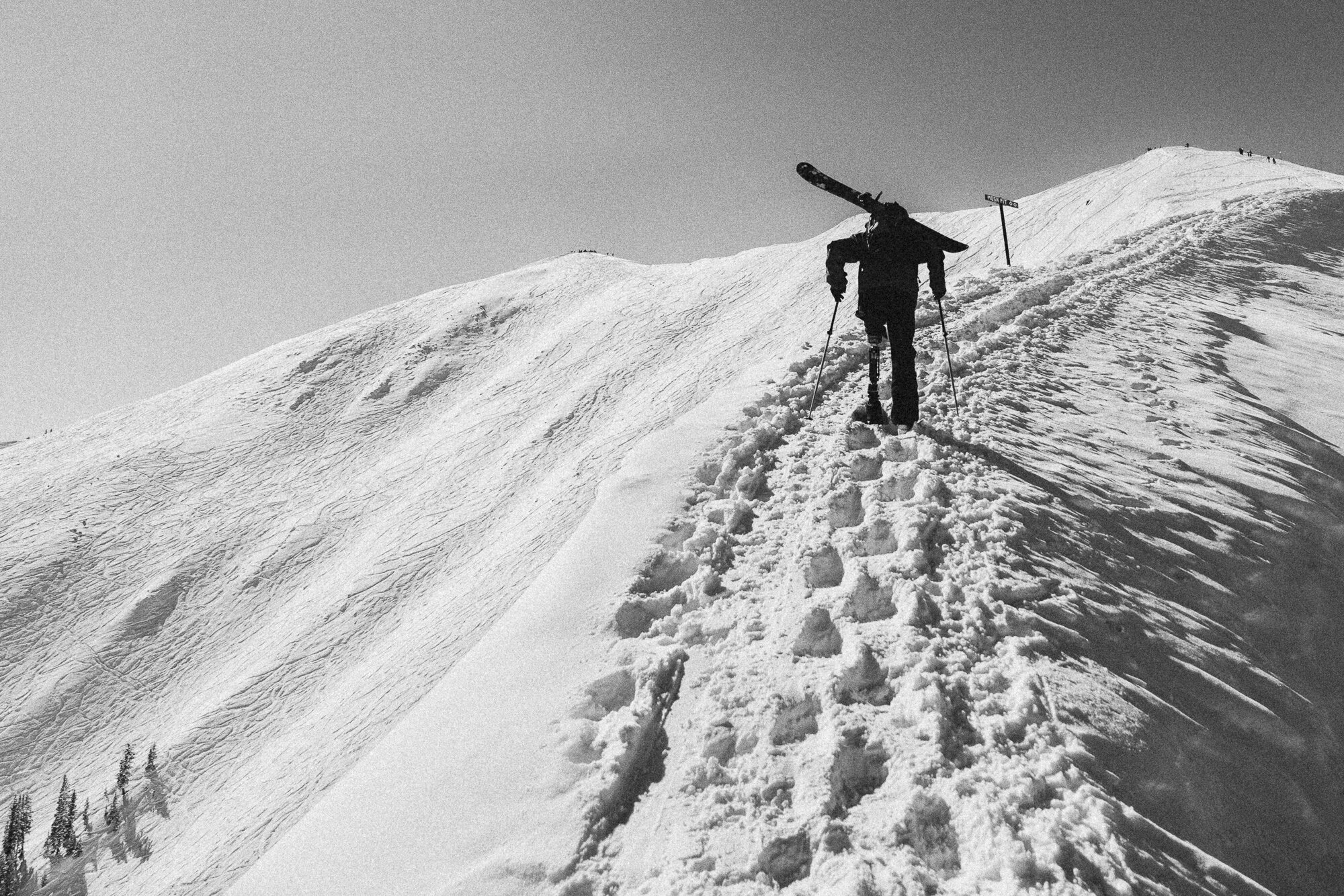2 LEGS IS 2 EASY | A Film by Tamara SUSA
In Colorado’s Roaring Fork Valley, 2 Legs Is 2 Easy follows Steve Karczewski as he defies expectations as an outdoor athlete. Born with bone cancer in his left leg and undergoing an above the knee amputation as a child, Steve has never known life with two legs. From skiing the steepest slopes with one ski to hitting the biggest jumps on his mountain bike, 2 Legs Is 2 Easy captures Steve’s resilience highlighting his role as an inspiring figure who feels right at home in his mountain community.
CURRENTLY ON BANFF MOUNTAIN FILM FESTIVAL WORLD TOUR
2 Legs is 2 Easy Film Trailer
Mountain town culture is all about highlighting the ones that are the most adventurous and inspire others to push their limits in their outdoorsy lives. In Colorado’s Rocky Mountains, specifically Roaring Fork Valley, one resident stands out as an inspiration to many.
Steve Karczewski was born with bone cancer in his left leg. After a year of chemotherapy and traveling around the country in search of a cure, his leg was amputated above the knee in order to prevent cancer from spreading. Since the amputation happened when he was young, Steve has never known what it is like to have two legs, and that hasn’t prevented him from doing anything and everything he’s ever wanted as an outdoor athlete.
His parents never let him feel any different than the other kids, and he was just as adventurous as a young boy like any other. Through school years he played different sports and picked up skiing and mountain biking right around middle school. Nowadays, Steve can be seen on the slopes of Snowmass Mountain both in winter and summer. But he is not just one of the skiers or bikers out on the trails. With his recognizable one ski, he is always searching for the steepest, hardest terrain to ski on, and on a mountain bike, he is most often found going off the biggest jumps. “Since it happened to me when I was young, I don’t know what it feels like to have two legs so this seems normal to me,” Steve said. “It doesn’t seem as extraordinary to me as to other people.”
Originally from High Bridge, New Jersey, Steve was recruited in 2008 by Challenge Aspen, an organization based out of Roaring Fork Valley that provides opportunities for people with disabilities, to join their Paralympic racing team. He has lived in Snowmass Village ever since, and even though he didn’t find himself to be a racer, Steve admits that race training was a great foundation for his one-leg skiing. Challenge Aspen coaches trained him to ski without the prosthetic and with outriggers - skis at the end of his poles. The transition to one-leg skiing was tough, but after he got used to it, Steve decided to ditch the outriggers as well, and continue his skiing career with regular poles, and on one ski, which is uncommon among the amputee athletes.
In the fall of 2018, Steve summited Cotopaxi, a 19,347-foot volcano in Ecuador, along with a group of amputees organized by ROMP global, a non-profit organization dedicated to providing prosthetic and orthotic care to those without access to these services. In preparation for the climb, Steve put biking on the side that summer and climbed his first “14ers”, peaks in Colorado that rise over 14,000 feet. His first summit was Castle Peak, followed by La Plata Peak, which gave him an advantage in altitude adjustment for the climb of Cotopaxi. Since then, Steve summited Mt. Elbert, the highest peak in Colorado, with his bicycle.
To say that he is an inspiration is an understatement.




















